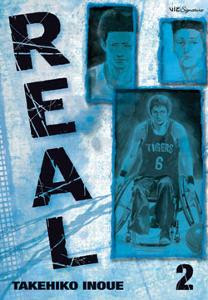
This is another title that I was turned on to by Danielle Leigh's Manga Before Flowers column, "10 Underrated Shojo Titles." I was intrigued enough to check this out since, so far, Danielle is yet to let me down!
The story: When Ageha finds out her perfect older sister, Hibari, is pregnant and will be marrying her "lame" boyfriend, she loses it and says some pretty hurtful things. Feeling bad about it, she becomes determined to help her sister with the wedding in order to make amends. When Ageha finds out Hibari is getting a custom-made dress from specialty store V.B. Rose, she jumps in to assist since she's pretty handy with a needle and thread. Unfortunately, the owner is a jerk and his assistant is a big flirt. Just how will Ageha survive working with the V.B. Rose staff and will she be able to make it up to her big sister?
Reaction: Perhaps appropriately, Ageha is a spoiled brat -- who else would feel betrayed by her older sister getting married? Initially it was annoying and off-putting. Thankfully, she has enough self-awareness to realize how wrong she is and does what she can to apologize. While I think she should just say she's sorry, Ageha wants to make a grand gesture, which, in some ways, shows her immaturity and lack of life experience. However, it is the thought that counts!
Deep thoughts: Having gotten married a couple of years ago, I still can't believe how much some brides are willing to spend on a dress they wear once. Since there are few repeat customers in the wedding industry, it seems like anything that's labeled "wedding" is automatically more expensive. While I think a bride or groom should be able to do whatever they want for their wedding, it amazes me that the average American wedding costs around $35,000.
Artwork: I think it goes without saying, but Banri Hidaka's character design is fairly unique. As the author of I Hate You More Than Anyone and Tears of a Lamb, both published by CMX, she's prone to lithe, effeminate men and girls with long legs and heart-shaped faces. But, Hidaka really mixes up this comic with chibis, cute fashion-oriented details and other visual embellishments, including a restrained use of screentone and the occasional flower-framed panel.
The verdict: If only... I liked the premise of this story and the unique cast of characters, but I had a hard time identifying with Ageha -- maybe it's because I'm an older sister myself, or that I'm just too old to fully appreciate her "struggle." But, I'm a sucker for arts and crafts, so this volume's shortcomings won't stop me from continuing on. If you're looking for humorous doses of teenage angst, needlework and pretty boys, you'll definitely enjoy this book. V.B. Rose is available in the U.S. from Tokyopop (online preview available).


















